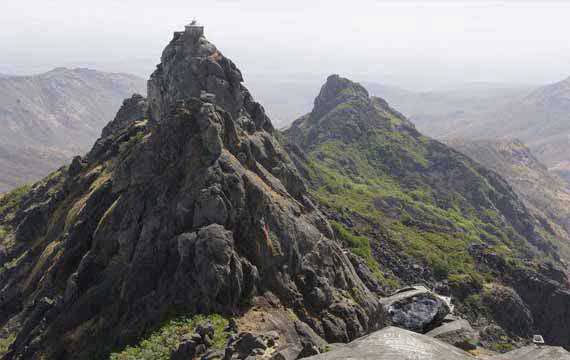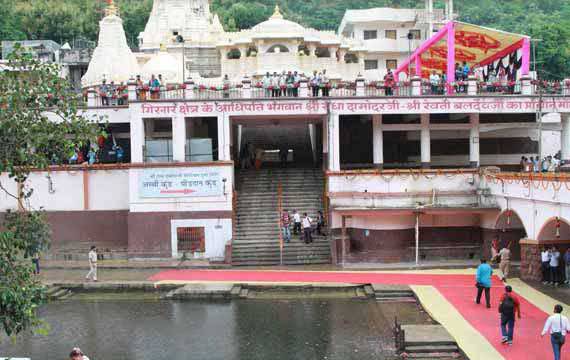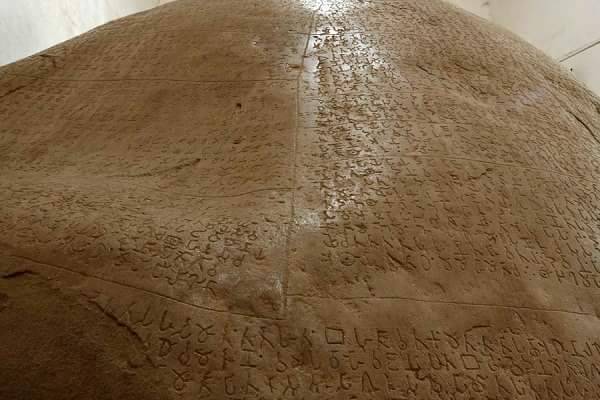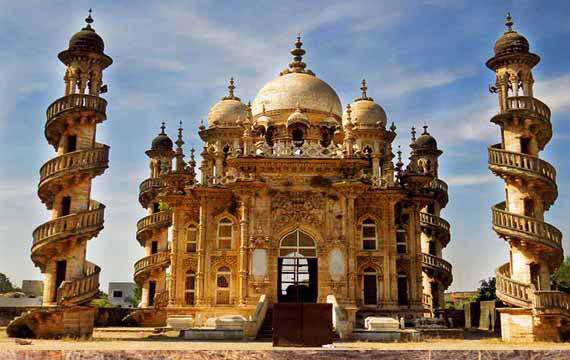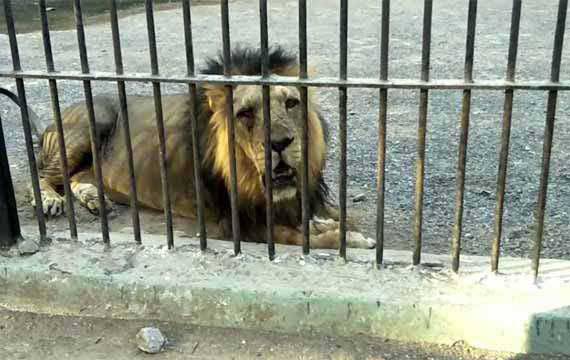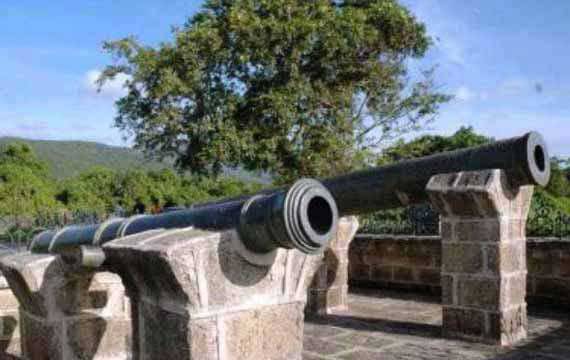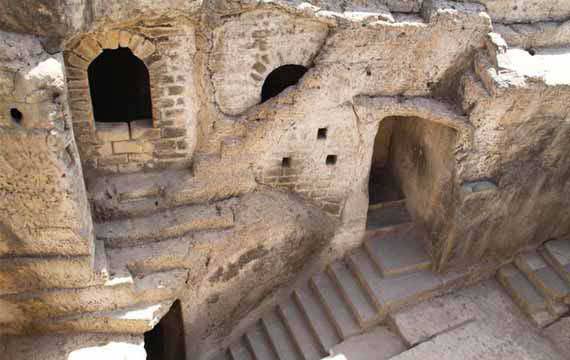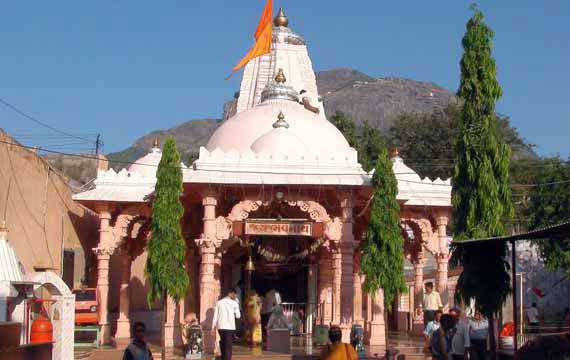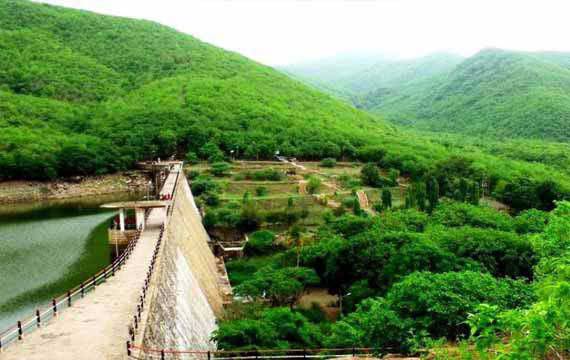Mountain Girnar
The mountain Girnar is older than the Himalayas and the Jain temples upon it are amongst the most ancient in the country; it is the Nirvan bhumi of 22nd Tirthankara Neminath. It is 3666 feet high, and is one of the most remarkable mountains in India. From the city of Junagarh, which is at an altitude of barely 351 feet only the top of Mount Girnar can be seen, as it has in front of it lower hills, of which Jogniya, or Laso Pawadi, 2527 feet; Lakhshman Tekri, Bensla, 2290 feet high; and Datar, 2779 feet high, are the principals.
Emperor Ashoka's Rock Edicts
An inscription with fourteen Edicts of Emperor Ashoka is found on a large boulder on the way to mount Girnar. The inscriptions carry Brahmi script in Pali language and date back to 250 BC. On the same rock are inscriptions in Sanskrit added around 150 AD by Mahakshatrap Rudradaman I, the Saka (Scythian) ruler of Malwa, a member of the Western Kshatrapas dynasty.
Mohabbat Maqbara
This impressive mausoleum (Maqbara) has splendid arches, many domes, and towering minarets. The architecture is detailed and opulently done. It has finely carved silver doors. There is a mosque next to it. It is located on Mahatma Gandhi Road, near the railway station and opposite the court. The Maqbara embodies the tomb of Nawab Mahabatkhanji.
Sakkar Baug Zoo
This is the oldest zoo in Gujarat and the 3rd oldest in India. The rare Gir lions are bred and supplied to other zoos. The zoo also has a collection of various native and foreign animals including monkeys, birds, tigers, leopards, bears, deer, wolves, crocodiles, snakes & reptiles and fish to name a few. The entire zoo is spread in a beautiful garden. It also has an extension called Safari.
Uparkot Fort
An impressive fort, Uperkot, located on a plateau in the middle of town, was originally built during the Mauryan dynasty by Chandragupta in 319 BC. The fort remained in use till the 6th century, and then it was covered over for 300 years. Then it was rediscovered in 976 AD. The fort was inundated 16 times over an 800-year period. One unsuccessful siege lasted twelve years.
Willingdon Dam
The dam is built on the river Kalwa at the foot of the hill from where it originates. It was built as a reservoir for drinking water for the people of Junagadh. It was named after Lord Willingdon, the then Governor of India. Near the dam, the steps go up to 2,779 feet (847 m) high to the famous shrine of Jamiyalshah Datar, where both Hindu and Muslim devotees share their faith.
